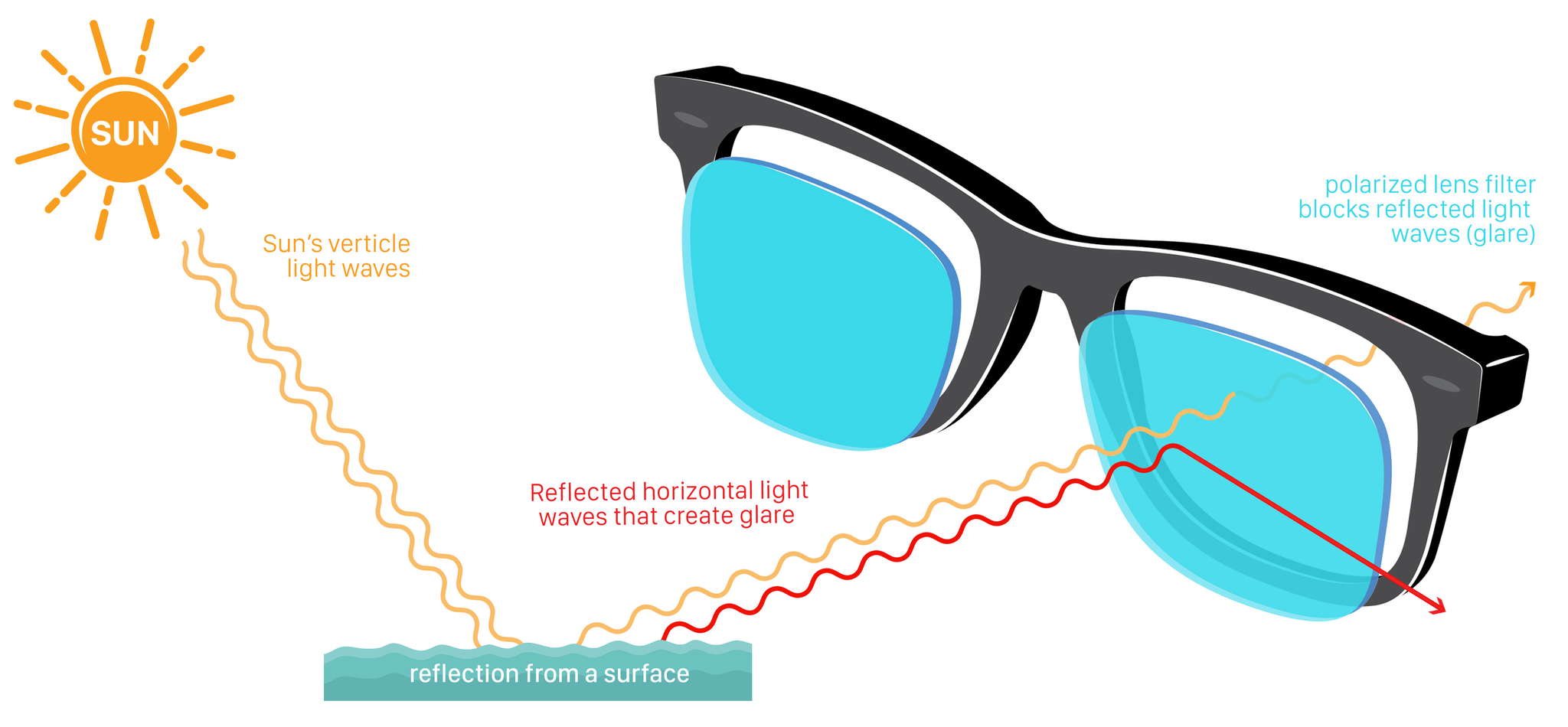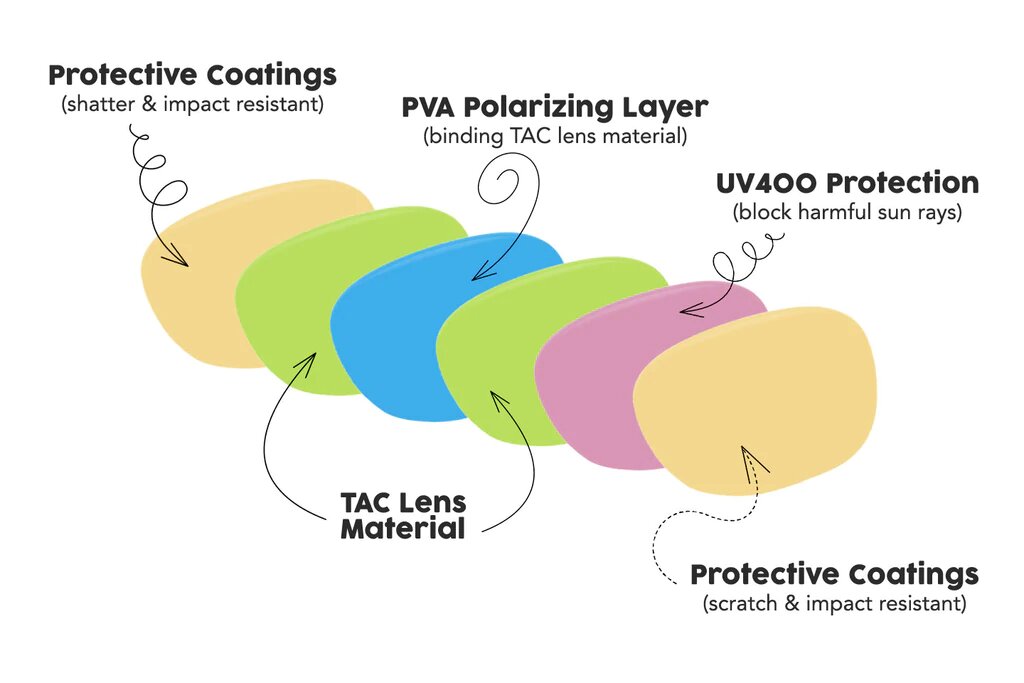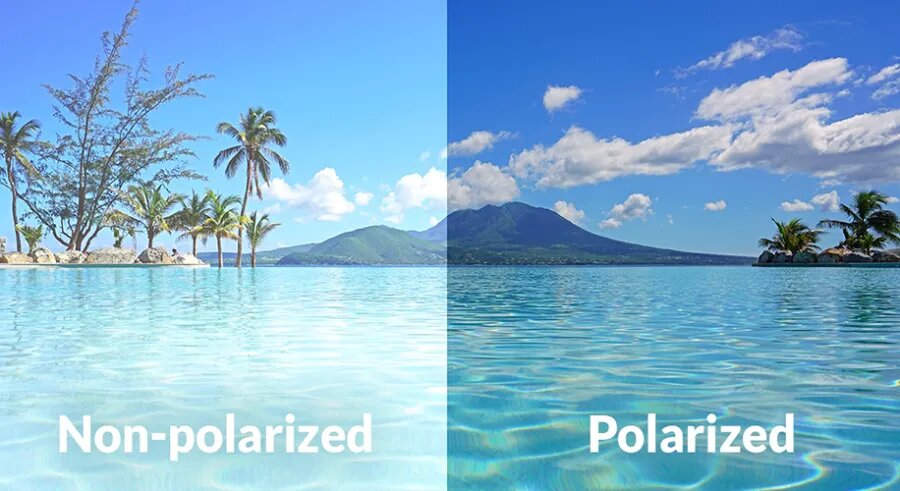
Polarized sunglass lenses reduce light glare and eyestrain. Because of this, they improve vision and safety in the sun. When working or playing outdoors, you can become frustrated and even temporarily blinded by reflected light and glare. This is a potentially dangerous situation that polarization can prevent.
How Polarized Lenses Work?
Polarized lenses have a special chemical applied to them to filter light. The chemical’s molecules are lined up specifically to block some of the light from passing through the lens. Think of it like a miniblind hanging in front of a window. Only light that passes through the blind’s openings can be seen.

If you value quality, performance and innovation you’ve come to the right place.
Index&Material Available
 Material Material |
NK-55 | Polycarbonate | MR-8 | MR-7 | MR-174 |
 Refractive Index Refractive Index |
1.56 | 1.59 | 1.60 | 1.67 | 1.74 |
 Abbe Value Abbe Value |
35 | 32 | 42 | 32 | 33 |
 Specific Gravity Specific Gravity |
1.28g/cm3 | 1.20g/cm3 | 1.30g/cm3 | 1.36g/cm3 | 1.46g/cm3 |
 UV Block UV Block |
385nm | 380nm | 395nm | 395nm | 395nm |
 Design Design |
SPH | SPH | SPH/ASP | ASP | ASP |
How Polarized Sunglasses Are Made
The first polarized lenses were made of a polarizing film that was sandwiched between two flat sheets of glass. Because glass lenses are so heavy, however, the advent of plastic and polycarbonate materials, which are lighter and thinner, made the glass lenses less popular.
One of the problems with early polarized sunglasses was delamination, when the polarizing film separated from the pieces of glass or plastic. This problem has been solved with modern lenses, as the plastic can be melted and poured into a mold in which the polarizing film has been suspended. The plastic then hardens around the film, creating a solid material, rather than a layered one. Polycarbonate lenses are created in a different manner, since polycarbonate lenses are injection molded and the heat from the process would destroy the polarizing film. For polycarbonate lenses, the polarizing film is applied to the front of the lens and covered with a scratch-resistant coating. This process means that polarized polycarbonate lenses are the thinnest and lightest polarized lenses available.

The Benifits Of Polarised Lens
Reducing glare can ease the eye strain drivers feel from long hours on the road.
Fishermen can often see under the surface of water using the lenses, which helps them to see fish or other objects.
Photographers use polarising filters on camera lenses to enrich the images they capture by giving them more contrast, and to increase the range of effects they can produce.
In addition to blocking blinding glare, polarised lenses can also help you to see better by improving contrast and visual comfort and acuity.

